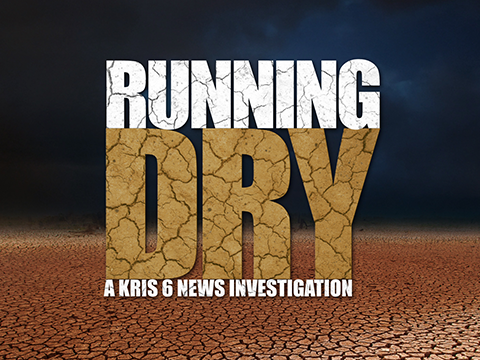- Texas A&M University-Kingsville (TAMUK) received a $250,000 grant aimed at helping farmers modernize energy sources in rural South Texas
- Energy consumption is costly for individual farmers.
- Adding solar panels or wind turbines saves energy, but some farmers worry that comes with a bigger cost.
More wind turbines and solar panels might pop up around South Texas beginning next year. This is because of a $250,000 grant that professors at Texas A&M University - Kingsville recieved. That grant is meant to guide farmers and rural small businesses into looking further into saving energy.
"It will allow us to provide one-stop service from beginning to end with all the information they need to submit this grant application. We will help them find contractors, suppliers, conduct technical assessment, and tell them what energy production they will have with this facility," Engineering Professor Dr. Hua Li said.
Farmer Daniel Wendland said in the summer alone, he burned about 1,000 gallons of fuel a day.
"We are a large consumer of energy. When we go to the fields we burn a lot of diesel, we burn an awful lot of fuel and electricity and our ginning processes and our elevators when we sell our products..." Wendland said.
Because of how much energy is used throughout the farming and harvesting process, professors are putting in the effort to change that.
"The idea for this project is to do an economic analysis beforehand so farmers can know what is the investment that they are going to need to have for that particular project, how much energy they are going to get from that facility," Business Professor Dr. Francesco Haces Fernandez said.
But Wendland said adding solar panels or wind turbines on their land comes at its own cost.
"It’s a detriment to us. I farm 4,000 acres. I’m going to lose 50% of the land that I farm and I lose 50% of my ability to make a living now," Wendland said.
He also said if farmers add renewable energy that takes up a part of their land, the result is a domino-effect on consumers. The less land they have to produce product, the less product there is out in the world to choose from.
"So you’re asking us to do our best to produce as much as we can so you have the luxury of choosing what you want and its a high quality product," Wendland said.
Wendland also concerned that if a farmer is leasing land from an owner, and the owner agrees to switching to renewable energy, the farmer is at risk of losing their job if they don't produce enough that year.
But professors said their grant is meant to help small farms and take up a small portion of land.
"Basically you only need maybe just one acre of land for solar panels, that’s enough," Dr. Li said.
"For solar panels for example, the area you have to use is relatively small so you don't lose a lot of area if you have cattle or if you are growing crops and if you balance that with all the benefits you are going to get, it's much greater," Dr. Fernandez said. "If you invest a little more in solar panels you can make them higher. Then you can have small cattle or crops that require shadow growing underneath it."
Farmers who choose to modernize their energy sources can get up to half of the construction cost of their solar panels or wind turbines paid for by REAP.
Farmers and small businesses who are interested in getting help can go online to https://www.renewableenergysources.us submit a request for a free assessment. If interested in continuing, visits and workshops will begin early next year for a more in-depth picture.
For the latest local news updates, click here, or download the KRIS 6 News App.





